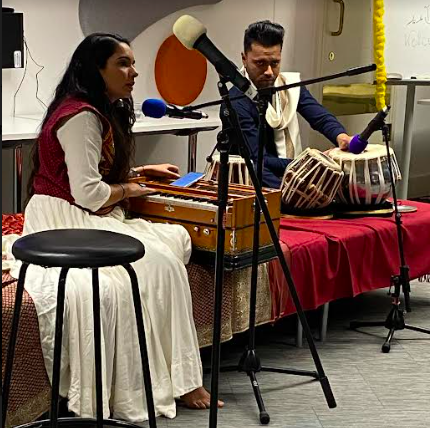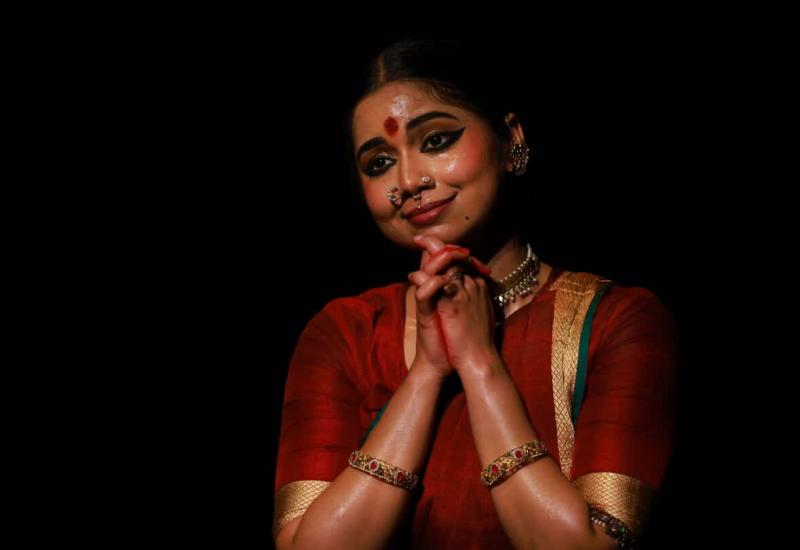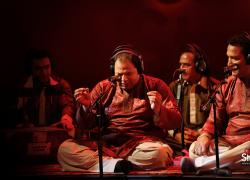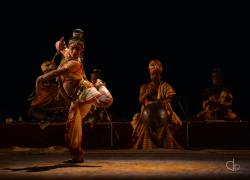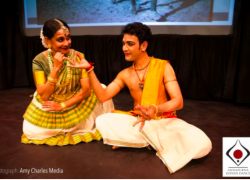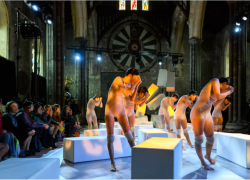Once upon a River: Folksongs and Poetry beyond Punjab’s Borders
Once upon a River
Folksongs and Poetry beyond Punjab’s Borders
4th February 2023
Harry M. Weinrebe Learning Centre, British Library, Euston Road, London
Reviewed by Ken Hunt
Photo: Hernoor Grewal and Parkash Pal | credit Ken Hunt
Once upon a River was an event organised as part of the British Library’s National Life Stories, a programme established to record and preserve the oral history “of as wide a cross-section of present-day society as possible”. Introduced by the programme’s Chandan Mahal, this free two-hour event took the form of a double-hander lecture–performance. Radha Kapuria supplied the words. Hernoor Grewal supplied the music and interwove commentary.
It marked Kapuria’s return to the British Library after presenting Musicians and Dancers in 19th Century Punjab in 2017. In the meanwhile she is Assistant Professor of Durham University’s History Department; the author of Music in Colonial Punjab: Courtesans, Bards, and Connoisseurs (2023); and co-authored with Naresh Kumar the de facto template for the talk, the recommended article ‘Singing the River in Punjab: Poetry, Performance and Folklore (2022) in South Asia: Journal of South Asian Studies.
The event’s title alludes, first, to Punjab as the land of [the] five rivers, and, second, to the way rivers flow through the region’s ‘Once upon a time…’ tales. Punjab itself derives from panj or punj (‘five’) and āb or aab (‘water(s)’). Despite Partition dividing the land geopolitically, Punjab lives on as a cultural entity, figuratively undivided, in the Big Five tributaries of the Indus and in its rich folk literature and folkways.
Radha Kapuria described how the Jhelum, the Chenab, the Ravi, the Beas, and the Sutlej figuratively irrigate Punjab’s folktales, traditional folk, devotional and popular music, and its popular culture on both sides of the Wagah border. In earlier preliterate times when the unlettered or barely lettered outnumbered the literate, a Muslim might not have been able to read Shahmukhi script or a Sikh Gurmukhi script, but they could equally relish Punjab’s khazana (‘treasure house’) of folktales. Or oral literature by a posher name.
Kapuria homed in on two of the greatest, “river-centric” tales: Heer Ranjha (‘Heer and Ranjha’) and Sohni Mahiwal (‘Sohni and Mahiwal’). (Think aloo gobi, ‘potato and cauliflower’ subji (Punjabi) or subze (Urdu).) On par with Romeo and Juliet as weepies, both belong to the regional qissa genre of tragic love stories. In Waris Shah’s Heer Ranjha the Punjabi Sufi poet put not only tragedy but also Sufi allegory into the telling. Through a prism of mystical Islamic Sufism, the obstacles the river presents the ill-fated lovers can be seen as metaphors for the obstacles which seekers of truth need overcome in order to reach the Beloved and divine love.
In Sohni Mahiwal the female heroine Sohni is unhappily married. She joins her lover on the other bank of the Chenab at night using an earthenware pot for buoyancy. Neither can swim. One night her “wicked sister-in-law” replaces the earthenware pot with one of unfired (“unbaked”) clay. It dissolves. She drowns. End of…affront to izzat (‘family honour’).
Kapuria then delved into examples of how these folktales live on in popular culture through, say, Noor Jehan’s singing from Faqeeria (1987) and the Indian playback singer Gurdas Maan who performed the titular role in Waris Shah: Ishq Daa Waaris (‘Waris Shah: The bird of Love’). The talk was followed by stimulating questions and revealing comments. Audience observations introduced social dimensions, and, implicitly in one case, climate change, mentioning carpenters who had worked on boatbuilding losing their livelihoods when the Ravi dried up. Another audience member recalled his teacher grandfather studying the tragic romances on the cusp of the “midnight hour” (Partition) for the equivalent of A-level Punjabi.
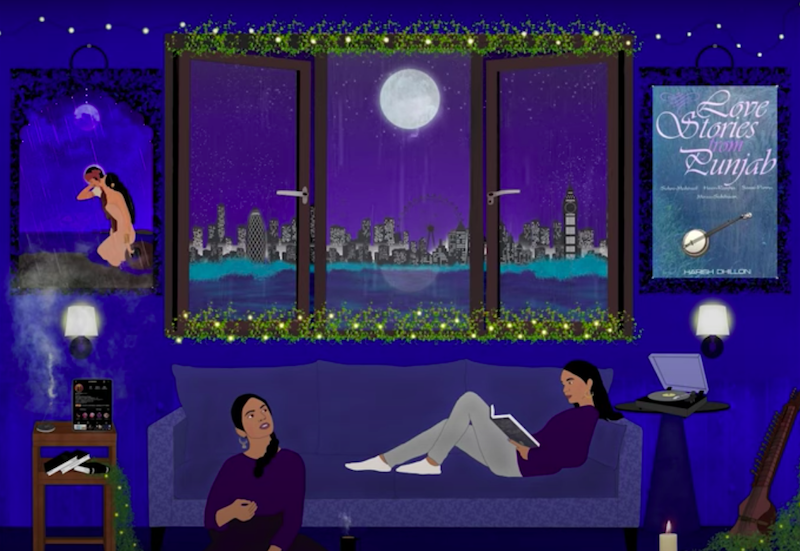
After the intermission the music began. The Grewal Twins were billed. But it fell to Hernoor Grewal to deliver alone. Illness prevented her sister Sukhman performing. Accompanying her on tabla was Parkash Pal. Providing musical examples for some of the qissi referenced in Kapuria’s talk, Hernoor sang or recited from songs drawing on Heer Ranjha, Sohni Mahiwal and the love story Sassi Punnu (‘Sassi and Punnu’). She translated verses into English, maybe shining light on a figure or an idea.
For the modern-day Pakistani singer Hadiqa Kiani’s ‘Boohe Baariya’ (‘Doors and Windows’), written by her mother Khawar Kiani and set by her brother Irfan Kiani, Hernoor described the images in the Grewal Twins’ back-screened video. For instance, since the twins are based in London, the river flowing through it was the Thames. Another time, Sobha Singh’s familiar painting of Sohni Mahiwal, displayed in Punjabi homes and restaurants, was projected. For me it has kitsch status but it is emblematic of how deeply these Once upon a River tales have entered into the Punjabi diaspora psyche and popular culture.

